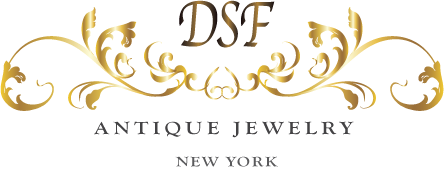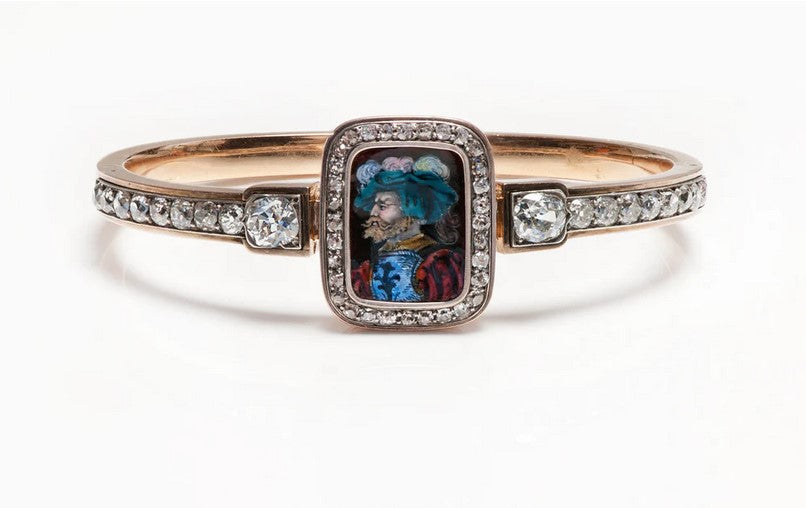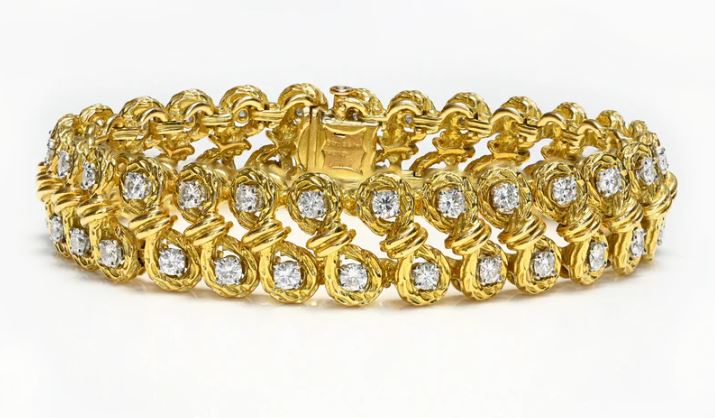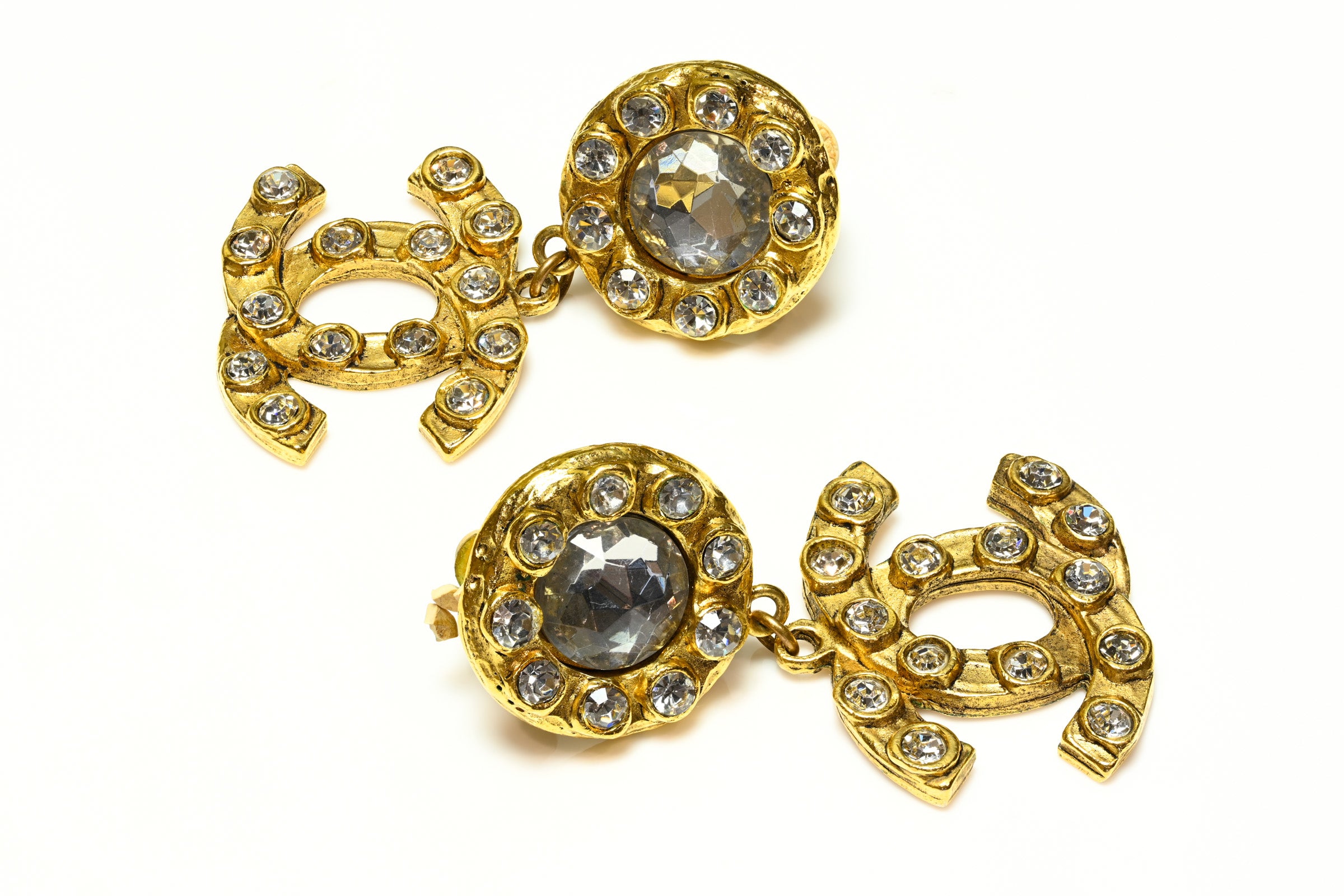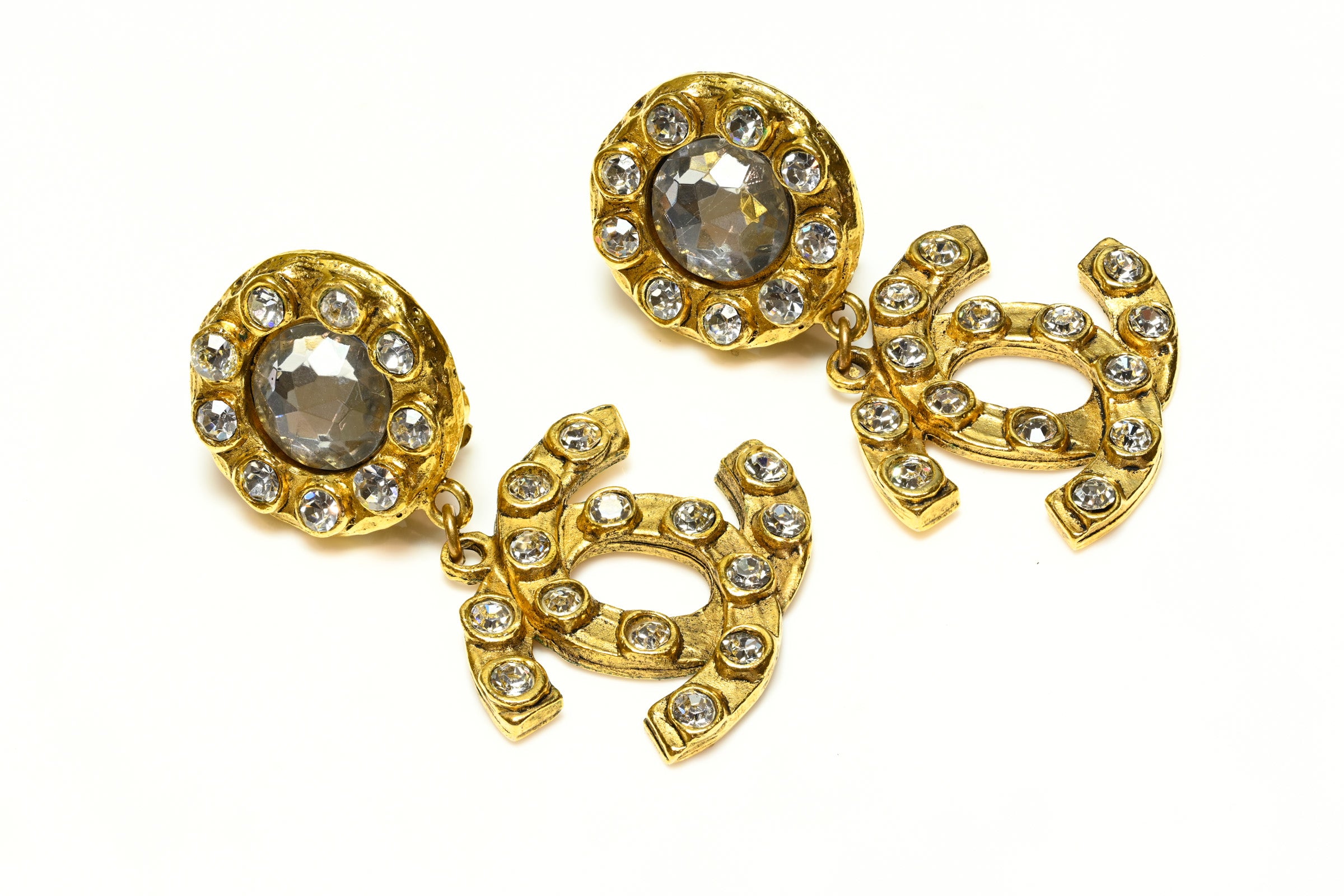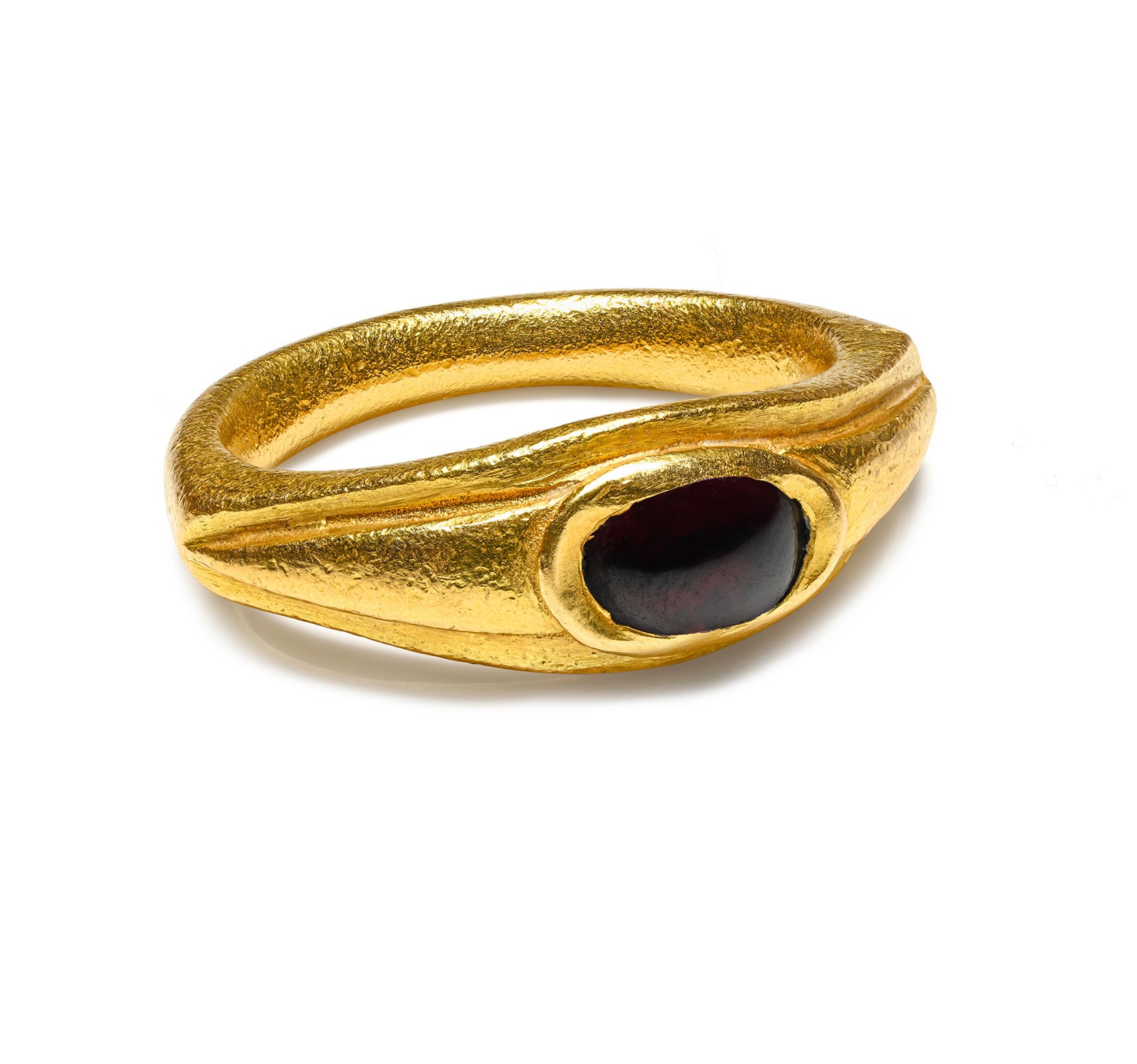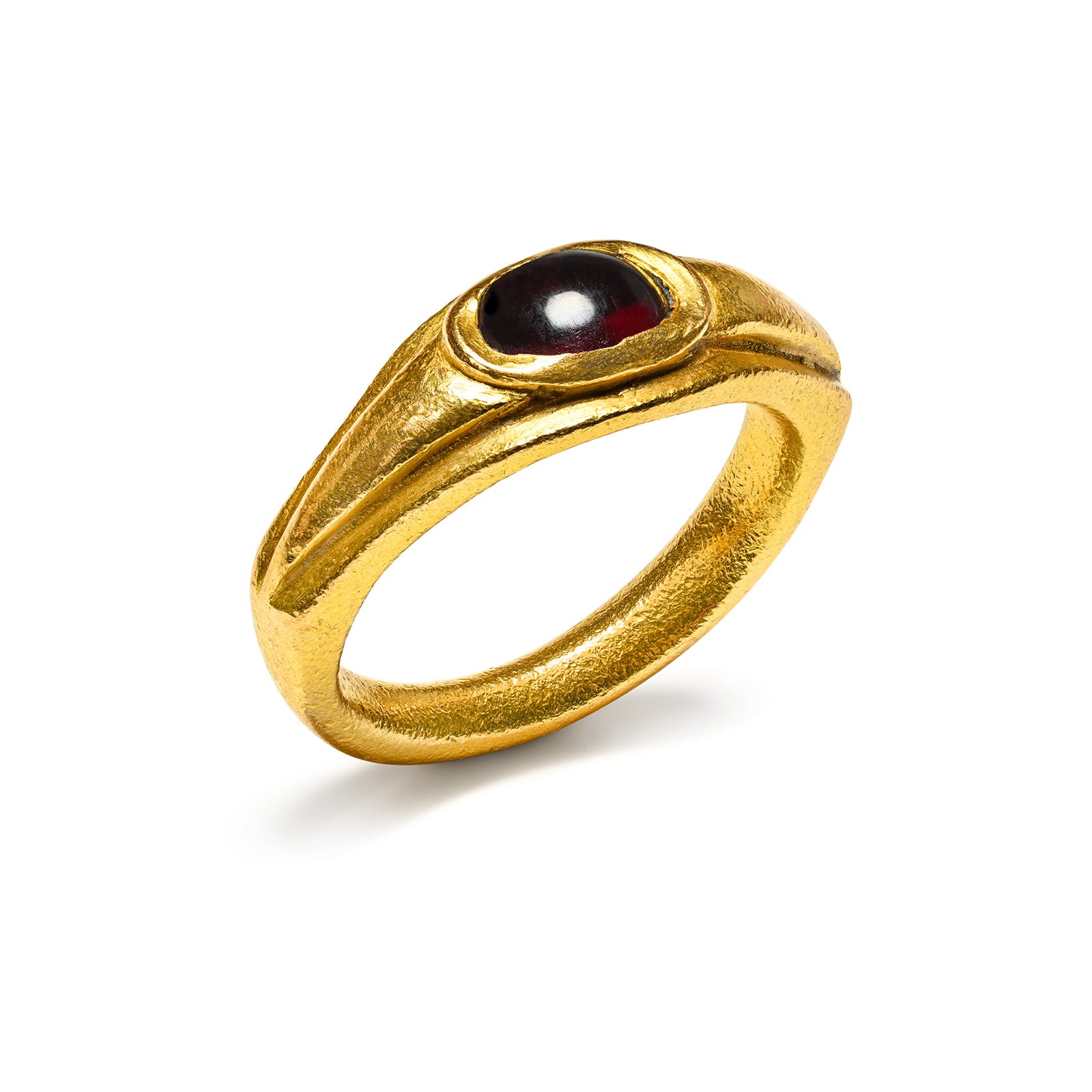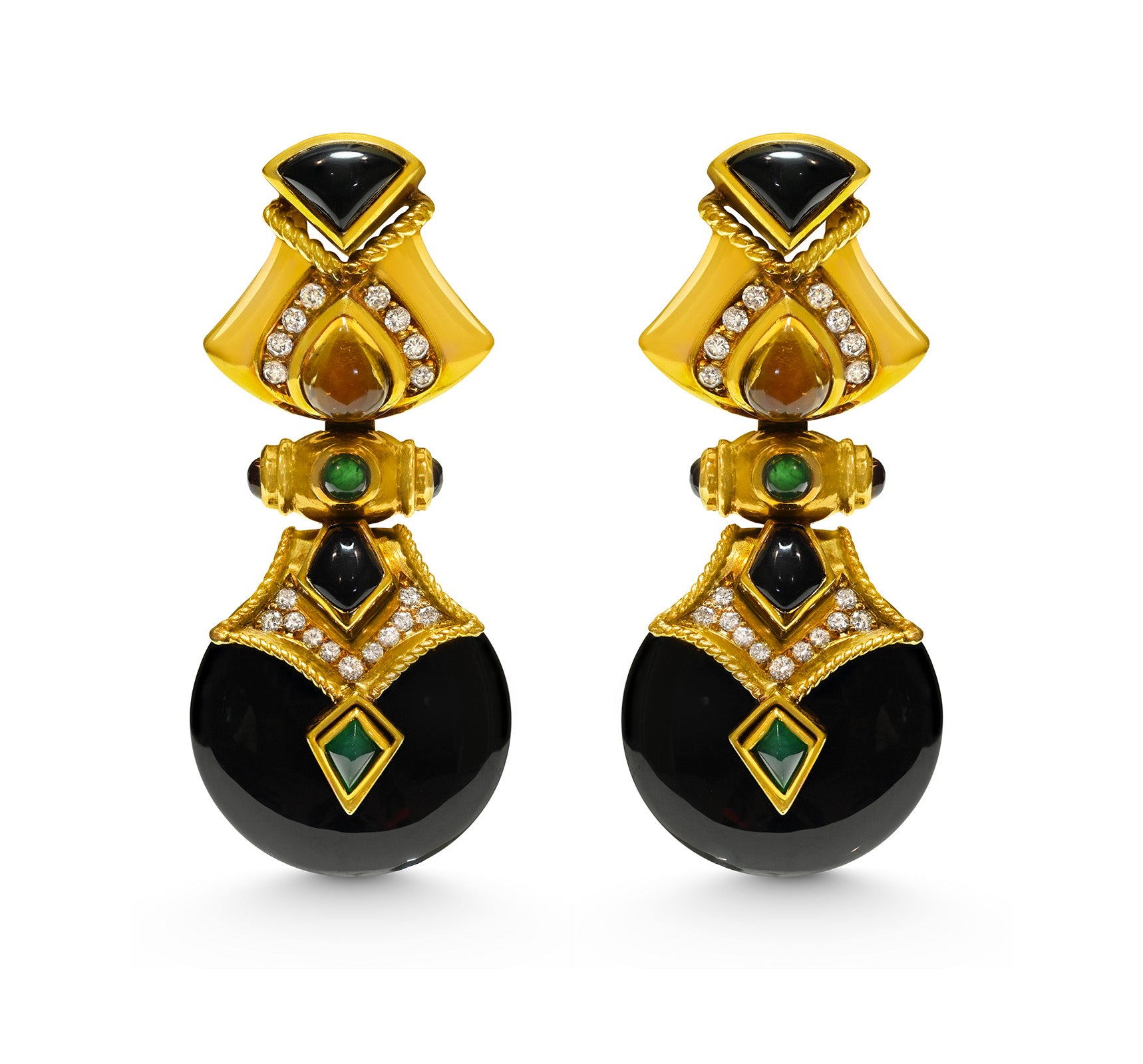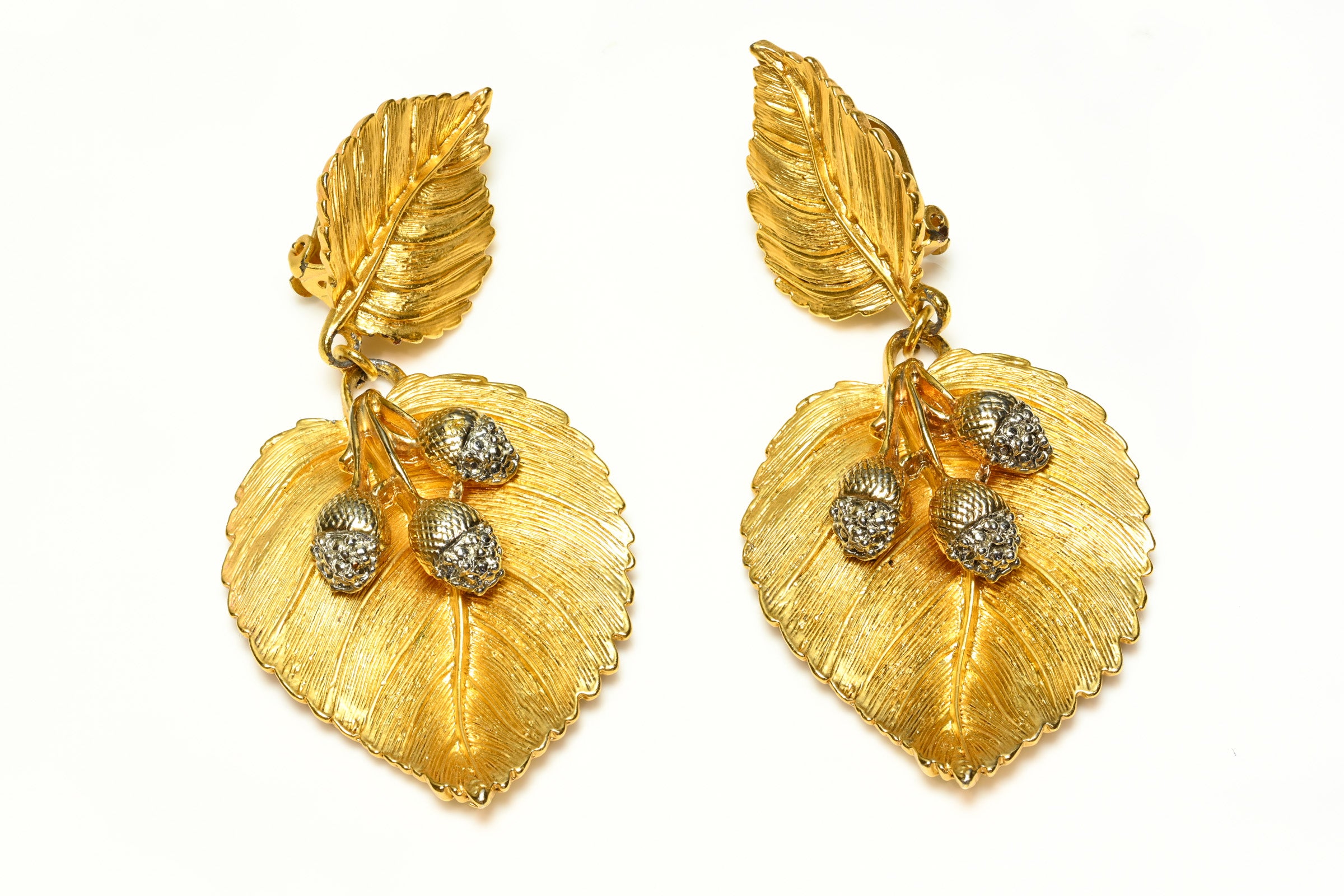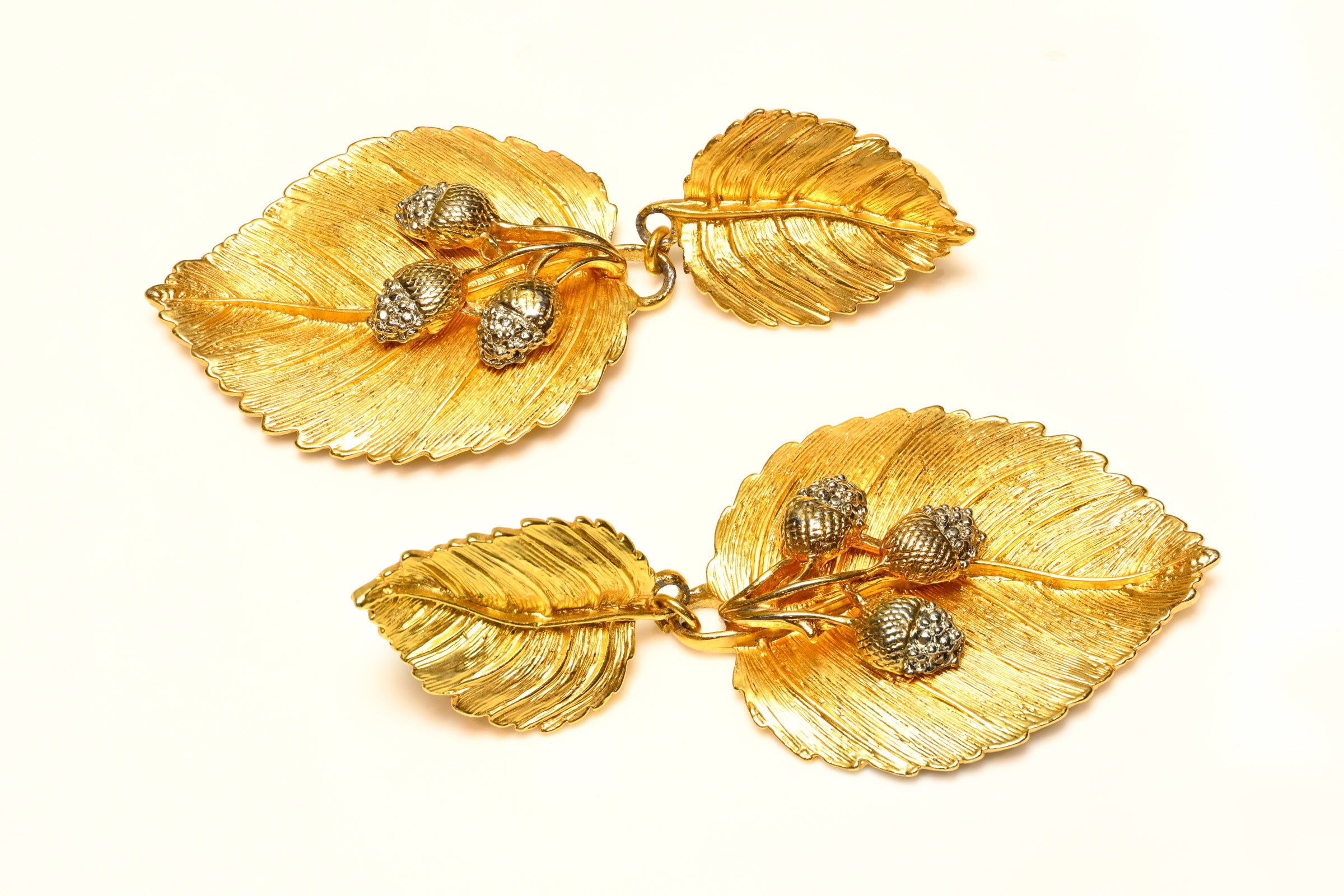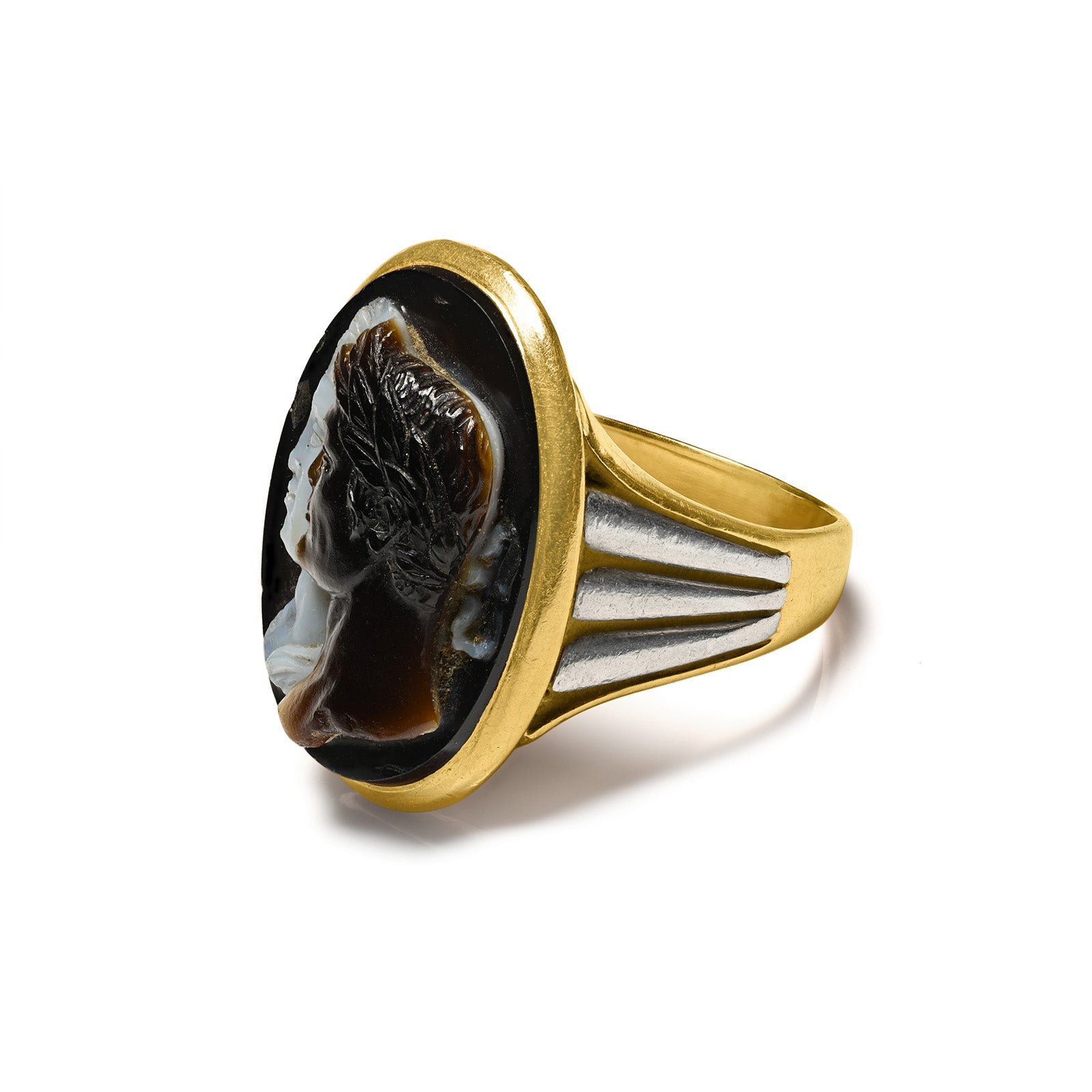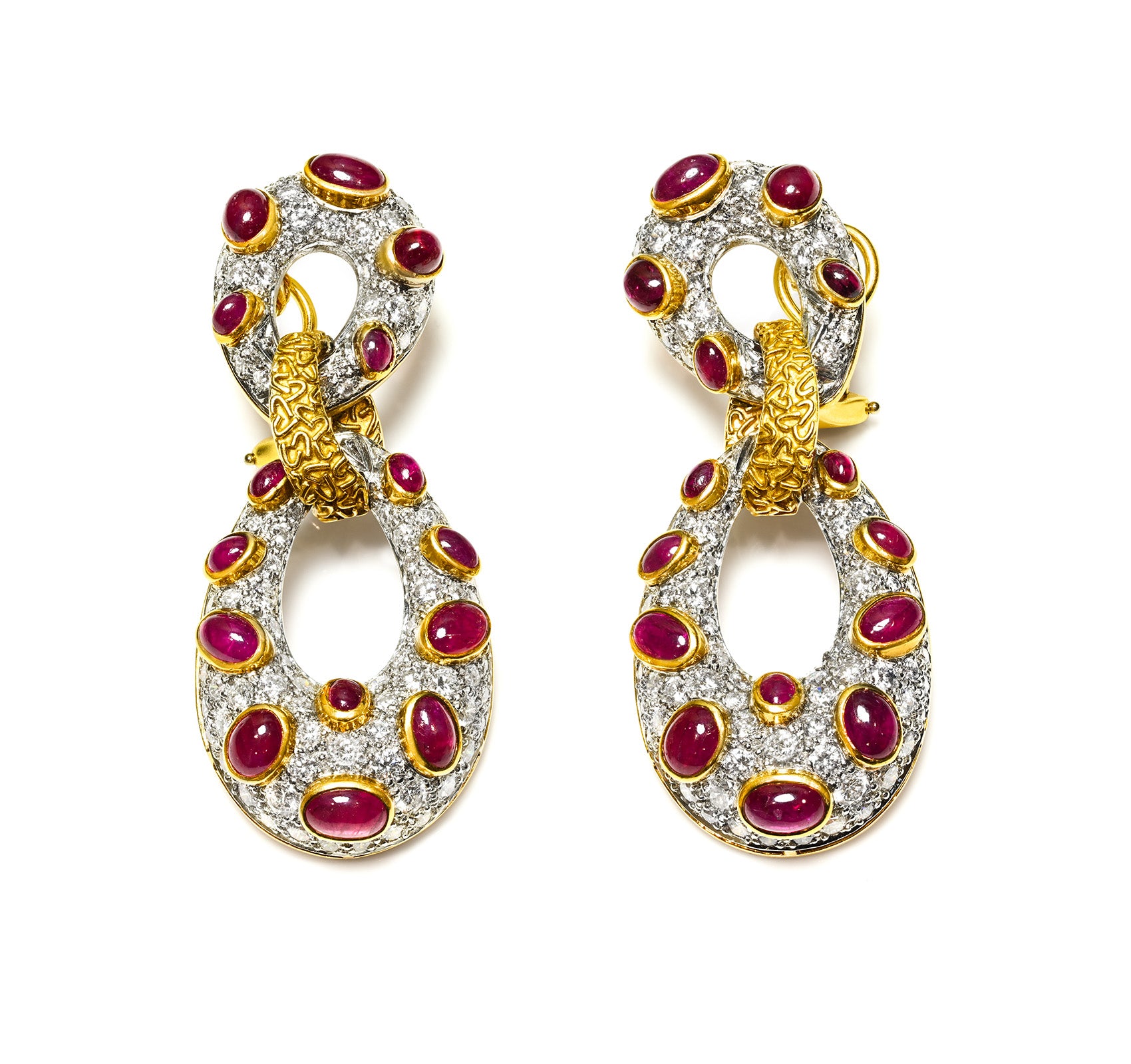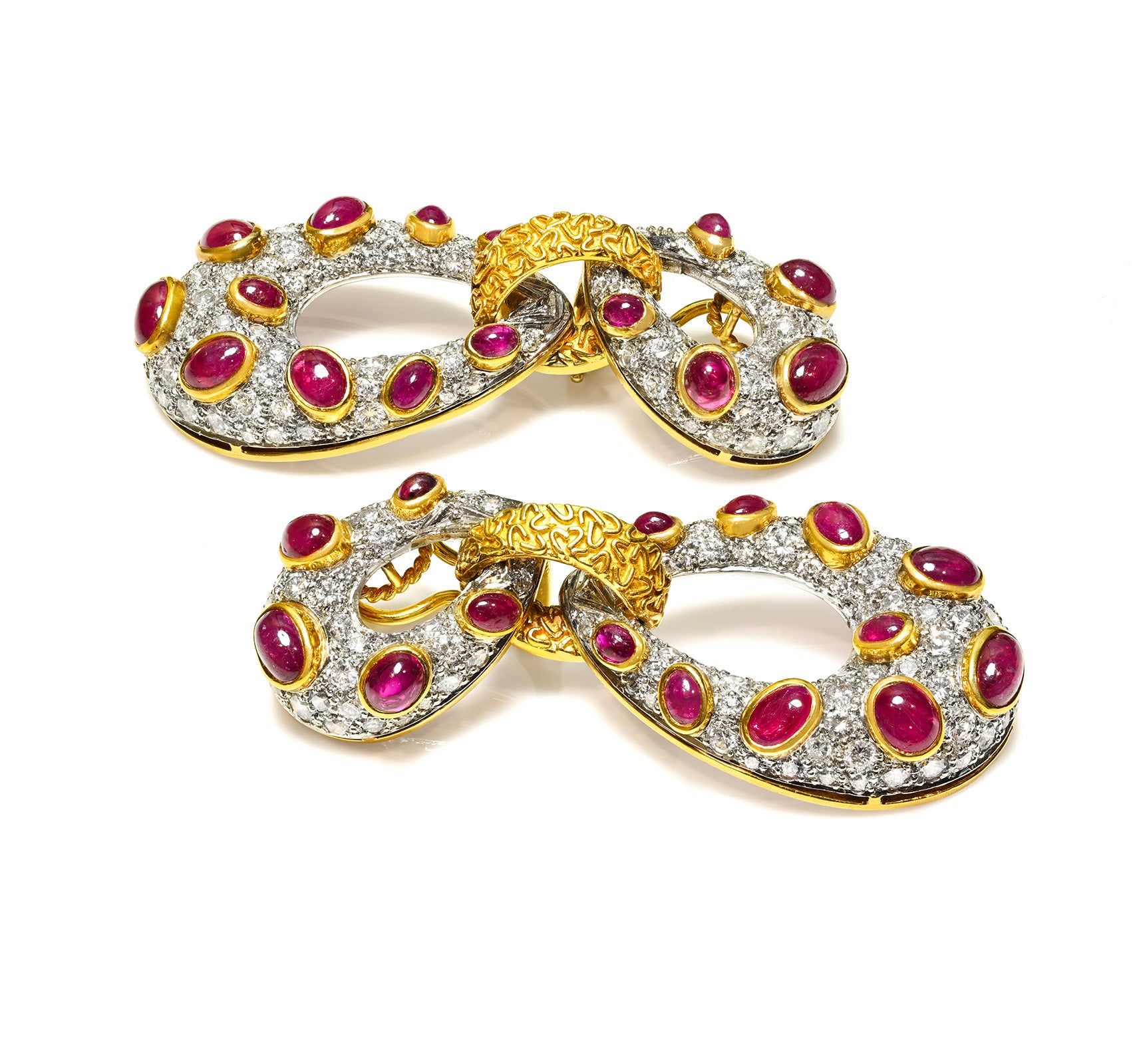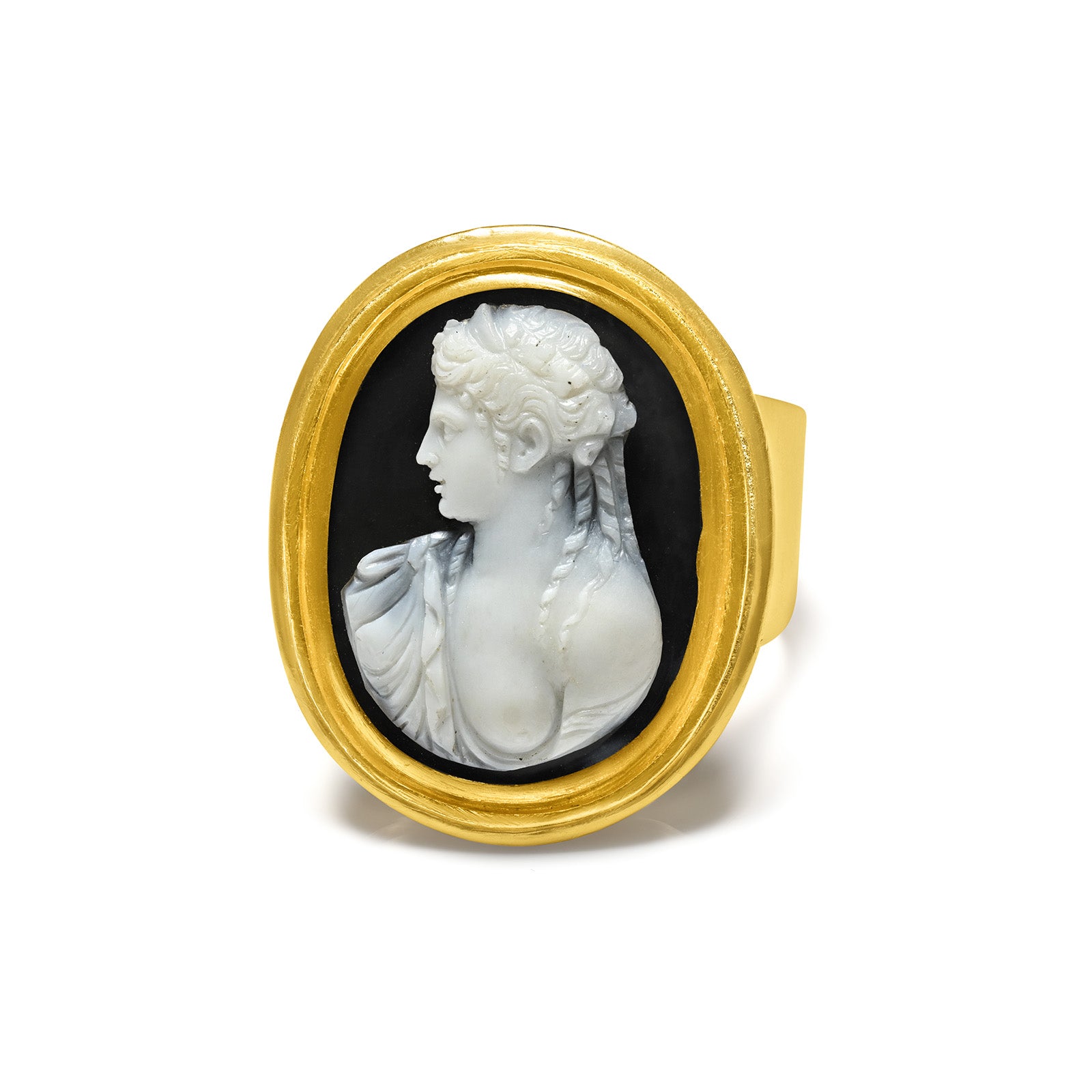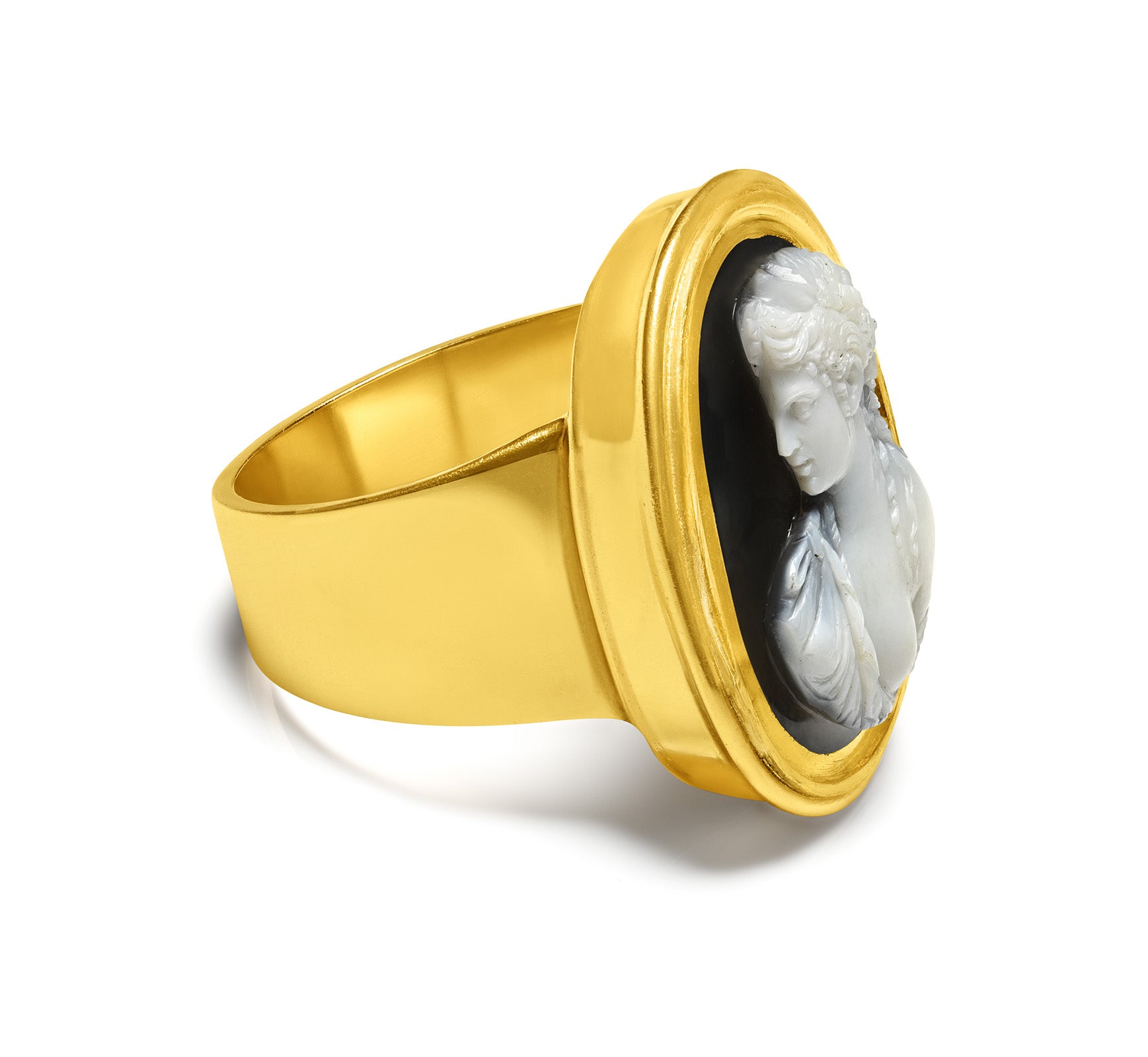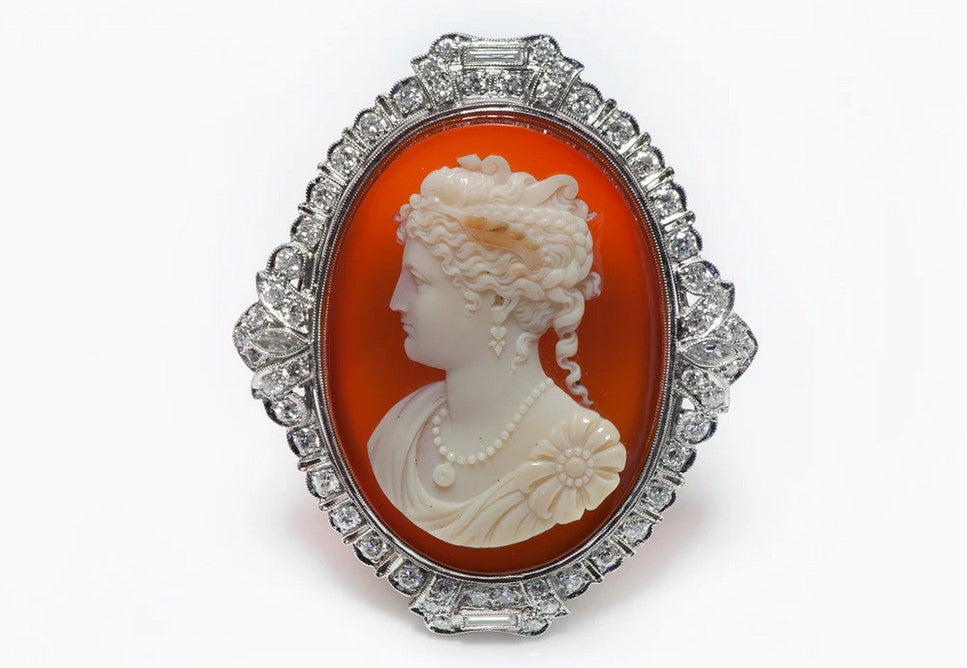
The Edwardian Jewelry – A Story of Elegance, Beauty, and Craftsmanship
The jewelry of the Edwardian era is celebrated for its exquisite craftsmanship and ethereal elegance.
The Edwardian jewels marked a departure from the heavier Victorian styles, embracing lighter and more intricate motifs that exuded sophistication.
The designs of this era were profoundly influenced by Queen Alexandra’s impeccable fashion sense and the artistic flourishes of the Art Nouveau movement.
Edwardian jewelry showcased an opulent yet delicate aesthetic, often incorporating airy, lacy patterns made possible by groundbreaking advancements in platinum crafting.
These designs drew inspiration from both classical antiquity and Art Nouveau, featuring iconic motifs such as bows, garlands, and elaborate florals.

Antique Edwardian Platinum Moonstone Cameo Diamond Ruby Ring - DSF Antique Jewelry
The Edwardian Era and Its Jewelry
The Edwardian era in the United Kingdom spanned the early 20th century, encompassing the reign of King Edward VII from 1901 to 1910. Often, this era is extended to the early years of King George V's reign, ending with the outbreak of the First World War in 1914.

King Edward VII (Credit: Luke Fildes via Wikimedia Commons)
The period began with the death of Queen Victoria in January 1901, marking the close of the Victorian era. King Edward VII, her successor, brought a contrasting approach to the monarchy, characterized by his appreciation for luxury and socializing.
Unlike his mother, Edward’s court embodied a vibrant and indulgent lifestyle, often drawing inspiration from continental European art and fashion. Even before his coronation, Edward was known for his love of leisure, gambling, and surrounding himself with a dynamic circle of wealthy plutocrats.
Jewelry played a pivotal role in the culture of this elite class, symbolizing both wealth and the carefree opulence of the era. This "golden age" was romanticized in later decades, remembered as a time of grandeur and elegance between the stern Victorian years and the devastation of the Great War.
When examining the stylistic elements of the Edwardian period, its timeline stretches beyond King Edward VII’s official reign, beginning in the twilight years of Queen Victoria’s rule and extending a few years after Edward’s death with the onset of World War I. Across Europe, this era is fondly remembered as La Belle Époque.
The final decade of the 19th century, known as fin de siècle, marked a dramatic shift in jewelry trends. The earlier enthusiasm for machine-made jewelry waned, giving way to a renewed appreciation for craftsmanship.
This transition brought about a new, delicate aesthetic. Jewelers who resisted the bold styles of Art Nouveau and the Arts and Crafts movement embraced the "garland" style (style guirlande), infusing flowing, elegant lines into traditional designs.
The Edwardian Era's jewelry drew inspiration from the 18th century, incorporating a refined reinterpretation of historical motifs. The result was a blend of timeless grace and contemporary innovation.

Black Starr & Frost Antique Edwardian Platinum Pearl Diamond Pendant Watch - DSF Antique Jewelry
The End of an Era and the Dawn of Modernity
The outbreak of the First World War in 1914 marked the decline of the Edwardian jewelry style. The demand for diamonds and gemstones diminished as the priorities of society shifted toward survival and practicality.
What followed was a starkly different world, defined by the modernity and industrialization of the Art Deco period. Under electric lighting, the Art Deco era introduced jewelry with bold brilliance, geometric forms, and an emphasis on efficiency paired with glamour.
Although the Edwardian period was brief, the jewelry it produced left a lasting legacy, celebrated for its exquisite craftsmanship and ethereal beauty.
Edwardian jewelry’s intricate techniques, such as millegrain and filigree, added depth and texture, underscoring the era’s commitment to precision and finesse. It is, fittingly, the last jewelry period named after a British monarch—a closing chapter of regal elegance.

Painting of Queen Victoria by Franz Xaver Winterhalter - Wikimedia Commons
From Victorian to Edwardian: A Transformative Era in Jewelry
The transition from Victorian to Edwardian jewelry reflects a profound shift in societal attitudes and artistic sensibilities. Moving away from the sturdy, intricate designs of the Victorian era, Edwardian jewelry introduced an airier, more graceful aesthetic that emphasized subtlety and refinement.
Platinum, with its strength and malleability, became the hallmark of Edwardian jewelry, enabling the creation of delicate, lace-like settings that were impossible to achieve with gold. This shift to lighter, more ethereal designs marked a stark contrast to the heavy, somber tones of Victorian mourning jewelry.
The influence of Art Nouveau added a whimsical elegance, with organic shapes and flowing lines breathing life into Edwardian pieces.
While the Victorian era's jewelry often reflected its macabre fascination with mourning and rigidity, the Edwardian period embraced romanticism and lighthearted luxury. Fine gemstones and diamonds took center stage, arranged in intricate patterns that blended classical motifs with Edwardian flair. Jewelers drew inspiration from ancient art, reinterpreting timeless designs with a modern, sophisticated twist.
The Industrial Revolution played a pivotal role in democratizing jewelry, making it accessible to a broader audience. Yet, the elite of high society resisted mass production, favoring finely crafted, bespoke creations that celebrated artisanal craftsmanship.
Edward VII’s preference for opulence and frivolity brought a fresh, playful energy to the royal court, shifting fashion trends toward more romantic styles. Necklines plunged, hemlines flirted with daring lengths, and jewels evolved to complement these bolder designs.
Jewelers experimented with texture and light, creating pieces that captured the elegance and romance of the era, offering a striking departure from the somber mood of the previous half-century.

Cartier Paris Edwardian Amethyst Diamond Stick Pin - DSF Antique Jewelry
The Craftsmanship Behind Edwardian Jewelry
Edwardian jewelry stands as a testament to skilled artisanship, utilizing precious and durable materials such as diamonds, pearls, and platinum to craft pieces that epitomized elegance and sophistication. The designs were light, detailed, and ethereal, reflecting a stark contrast to the machine-produced jewelry of earlier eras.
Drawing inspiration from the 18th century, Edwardian jewelers revived traditional embellishments like lace, ribbons, garlands, and bows. These intricate motifs captivated Edwardian fashionistas, who favored accessories that complemented the feminine pastels and flowing silhouettes of the time.
Platinum emerged as the defining metal of Edwardian jewelry. Its strength and resilience allowed for the creation of delicate millegrain and filigree designs, where tiny metal beads and threads mimicked the appearance of lace. These techniques created an "invisible setting" effect, making diamonds appear to float on the skin, seamlessly blending with the era’s airy and romantic aesthetic.

Antique Edwardian Platinum Diamond Pearl Pendant - DSF Antique Jewelry
The use of platinum not only revolutionized the craftsmanship of jewelry but also redefined its style, bridging the gap between classic artistry and modern innovation. Its ability to support intricate designs while maintaining a sense of lightness elevated Edwardian jewelry to unparalleled heights.
Diamonds, widely available and reasonably priced thanks to the establishment of the De Beers Consolidated Mines Ltd. in 1888, were often featured in Edwardian designs. Jewelers combined various diamond cuts in a single piece, showcasing creativity and innovation.
However, during this period, pearls remained more precious than diamonds. Their size, quality, and luminous beauty symbolized true status, aligning perfectly with the era's delicate "white" concept.
Millegrain, a new and popular decorative technique, enhanced the softness and elegance of Edwardian jewelry. It involved placing fine, bead-like details along the edges of gemstones or designs, adding texture and depth while maintaining an ethereal appearance.
Edwardian jewelry’s intricate craftsmanship and use of exquisite materials captured the essence of the period’s artistry and remain timeless examples of elegance and ingenuity.

Antique Edwardian Opal and Diamond Gold Ring - DSF Antique Jewelry
Diamonds: The Shimmering Heart of Edwardian Jewelry
Diamonds were the crowning glory of Edwardian jewelry, epitomizing wealth, elegance, and timeless sophistication.
Their unmatched brilliance elevated the intricate designs of the era, serving as both the centerpiece and the finishing touch of Edwardian creations.

Edwardian Fresh Water Pearl Diamond Pendant - DSF Antique Jewelry
The diamond cuts and settings of the time were pivotal in shaping the era's jewelry. Rose cuts, old mine cuts, and single cuts were meticulously crafted to complement the delicate, lace-like designs synonymous with Edwardian craftsmanship.
These traditional cuts captured light beautifully, enhancing the ethereal charm of the jewelry.

Antique Edwardian Diamond Platinum Horseshoe Brooch - DSF Antique Jewelry
Technological advancements, led by De Beers, further revolutionized diamond cutting. Innovations in faceting techniques improved the clarity and brilliance of diamonds, ensuring they sparkled with unparalleled intensity.
These advancements allowed Edwardian jewelers to create intricate knife-edge settings and delicate millegrain borders, amplifying the visual appeal of each stone.
Edwardian rings, in particular, showcased the brilliance of diamonds in artistic and refined designs. The precision of the craftsmanship and the elegance of the settings ensured that every piece radiated the sophistication and luxury that defined the era.

Antique Edwardian Gold Diamond Seed Pearl Heart Pendant Brooch - DSF Antique Jewelry
The Styles: Edwardian Jewelry's Signature Charm
Edwardian jewelry stands out for its delicate and feminine symbolism, defined by motifs of bows, lace, and garlands. Intricate filigree craftsmanship was a hallmark of the era, capturing an air of refined elegance.
The prevalent use of platinum, coupled with light-colored gemstones like pearls, diamonds, aquamarines, amethysts, and opals, created the iconic "white on white" or pastel effect that appeared ethereal, almost as if the gems floated on the wearer's skin.
Taking inspiration from earlier periods, Edwardian jewelry often reflected the extravagance of the Court of Versailles and drew upon 18th-century design patterns. This historical influence was reimagined to suit the modern tastes of the Edwardian elite.
Notable styles from the period included negligees, which featured two pendant droplets hanging asymmetrically from a single chain, and sautoirs—long, elegant strings of beads that exuded sophistication.

Antique Edwardian Diamond Demantoid Ruby Gold Lizard Brooch - DSF Antique Jewelry
Queen Alexandra’s Influence on Edwardian Elegance
Edwardian jewelry was profoundly shaped by the tastes of Queen Alexandra, whose influence extended well beyond the royal court to define aristocratic fashion trends. Her preference for high necklines, luxurious forms, and ornate jewelry reshaped the aesthetics of the era, making sophistication and opulence the ultimate markers of style.
A fervent lover of diamonds and pearls, Queen Alexandra popularized elaborate brooches, tiaras, and choker necklaces—known as colliers de chiens. These dog-collar-inspired pieces ranged from pearl strands and black velvet ribbons adorned with glittering flowers or buckles to intricate platinum designs that encased gemstones in delicate netted patterns.
Queen Alexandra's timeless sense of style not only set the tone for Edwardian jewelry but also left a lasting legacy, influencing generations of designers and establishing her as a true icon of elegance.

Queen Alexandra (Credit: W. & D. Downey via Wikimedia Commons)
Edwardian Necklaces
The Edwardian era brought a renewed focus on necklaces as necklines became more revealing compared to the restrictive Victorian period.
The iconic colliers de chien, or "dog collars," emerged as a hallmark of the time. These chokers were crafted from ribbons adorned with gemstones, brooches, or strands of diamonds and pearls. They perfectly complemented the era's feminine elegance.
Long necklaces also rose in popularity. Pearl chains extended below the waist, while sautoirs, made of long ropes of pearls or beads with tasseled ends, became a defining accessory of the elite.
Major jewelry houses like Cartier and Boucheron catered to this trend. Cartier's long, double-pendant lavalier necklace, named after French actress Ève Lavallière, was a masterpiece of Edwardian design. Similarly, Paul LeGrand's pearl-and-diamond rondelle necklace for Boucheron showcased the era's attention to detail and innovation.
Edwardian Bracelets
Edwardian bracelets reflected the era's light and airy aesthetic. Typically worn alone, they featured delicate floral designs, swirling motifs, and intricate fronts. These tapered into fine chain links on the underside of the wrist, offering both elegance and comfort.
The understated designs perfectly balanced sophistication with practicality, making them timeless accessories.
Edwardian Rings
Edwardian rings, particularly engagement rings, were exquisite and elaborate. Crafted with platinum and adorned with diamonds, these rings employed intricate techniques like millegrain and filigree to enhance their beauty.
The use of airy, lace-like designs created pieces that were both ornate and refined, making them highly sought-after even today as vintage engagement rings.

Antique Edwardian Sapphire Diamond Pearl 18K Gold Ring - DSF Antique Jewelry
Edwardian Earrings
Edwardian earrings captured the era's ethereal aesthetic with designs that appeared almost fabric-like in their delicacy. These earrings featured millegrain edges, platinum openwork, diamonds, and pearls.
Long, dazzling earrings adorned with garland-style wreaths and prominent focal stones became the statement pieces of the time, surpassing the simpler diamond studs of previous decades.
Edwardian Buckles and Slides
The Edwardian fascination with delicate details extended to buckles and slides, which experienced a resurgence. Often used to cinch waistlines or adorn dresses, they were crafted with the same attention to elegance and intricacy.
In some cases, buckles doubled as headpieces, fastened with ribbons to serve as stylish alternatives to diadems.
Edwardian Matching Sets and Parures
The tradition of parures—coordinated jewelry sets—began to fade during the Edwardian period. Instead, mix-and-match sets gained favor, offering versatility for both day and evening wear.
This shift reflected the practicality of lighter, platinum-based designs, which harmonized effortlessly across different pieces.
Heavy, jeweled items from the Victorian era became impractical as fashion moved toward gossamer fabrics and minimalist elegance. The monochromatic palette of platinum and diamonds further enhanced the versatility and timeless appeal of Edwardian jewelry.
Major Jewelry Designers of the Time
The Edwardian era was marked by a heightened sophistication in jewelry design, brought to life by some of the most iconic names in the industry.
Renowned brands such as Fabergé, Tiffany & Co., and Cartier played a pivotal role in shaping the aesthetic of the time, crafting pieces that combined luxury with exquisite artistry. Their innovative designs often featured pearls, diamonds, and intricate platinum work, leaving an indelible mark on the world of jewelry.
Cartier, in particular, became synonymous with platinum, using the metal to create lighter, more intricate designs that contrasted with the heavier gold jewelry of previous eras. Their pieces epitomized the airy and ethereal aesthetic of Edwardian fashion. Meanwhile, Tiffany & Co. stood out for its creative use of colored gemstones, paired with its commitment to superior craftsmanship.
Fabergé, known for its iconic jeweled eggs and intricate enamel work, added a touch of Russian artistry to Edwardian jewelry. Their creations, often adorned with vibrant gemstones and meticulous designs, attracted the era's elite, making Fabergé a hallmark of opulence and exclusivity.
These designers didn’t just create jewelry; they crafted works of art that reflected the social and cultural shifts of their time, embedding stories and symbolism into each piece.
Edwardian Jewelry Is Everlasting
The enduring allure of Edwardian jewelry lies in its delicate balance of beauty and craftsmanship. Collectors and enthusiasts continue to prize these pieces for their historical significance and timeless elegance.

Edwardian Octagonal Gold Platinum Diamond Fancy Cut Sapphire Stick Pin - DSF Antique Jewelry
Modern jewelry designers often draw inspiration from the Edwardian era, integrating its techniques and motifs into contemporary creations.
The use of platinum, intricate filigree, and garland-style designs remain popular in reimagined forms, proving the lasting influence of Edwardian aesthetics.
Edwardian jewelry, with its subtle sophistication and romantic sensibility, is more than a relic of the past—it's a continuous source of inspiration, seamlessly blending tradition with modernity.
